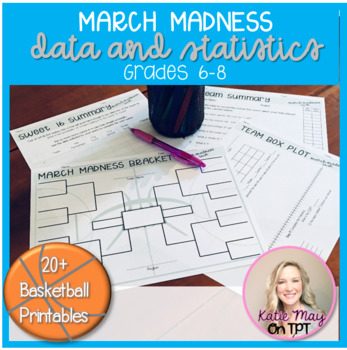Data and Statistics Resource For Middle School | March Madness
- PDF
Description
Welcome to the BEST March Madness product on the market for Data and Statistics!
Do you love providing real world applications to your math students? Do your students get excited for friendly competition and real world research? Are you looking for something to take you beyond the textbook?
If you answered yes, this is the data and statistics resource bundle you are looking for!
Click Here to Follow Me and Learn about New Products!
All new products are 50% off for the first 24 hours!
This resource bundle has:
- Over 15 data and statistics printables themed for basketball (March Madness)
- An overview of the interactive and real world March Madness Task
- 6 classroom posters for the March Madness Task
- 3 accompanying worksheets to guide students through data collection and analysis for the March Madness NCAA tournament
- 1 Blank March Madness Bracket for students
- 1 Classroom Score Card
Topics Included:
- dot plots
- histograms
- box plots
- scatter plots
- comparing box plots
- random sampling
- measures of center and variation
- mean absolute deviation
- probability
- single event probability
- compound event probability
- theoretical vs experimental probability
- line of best fit
- two way tables
Check out my BOX PLOTS FREEBIE that is a part of this resource!





